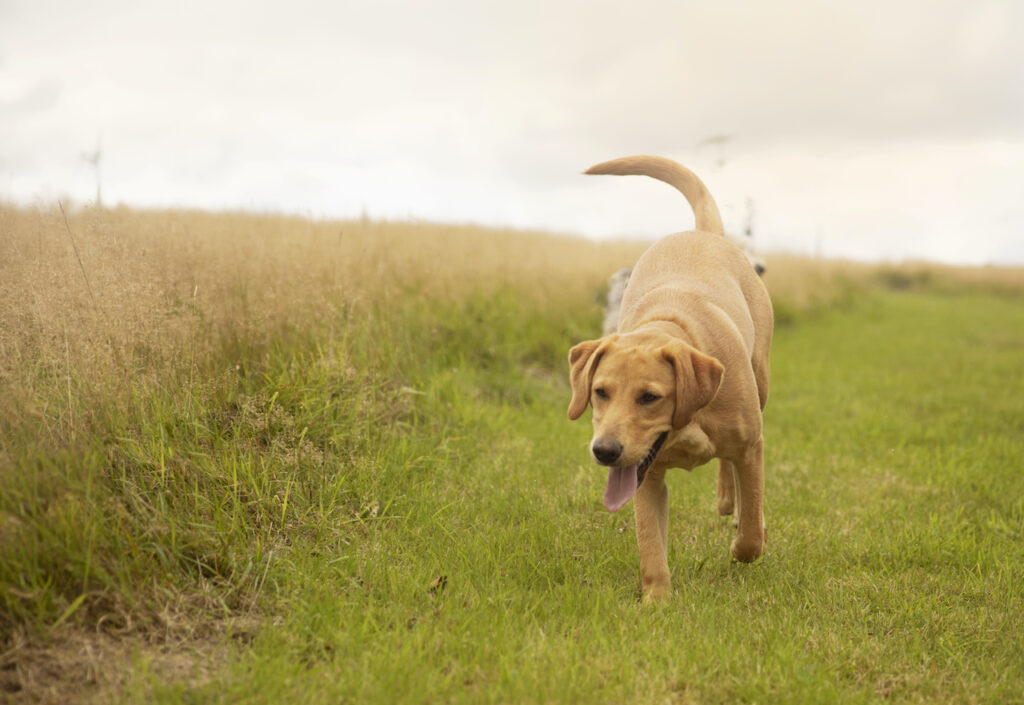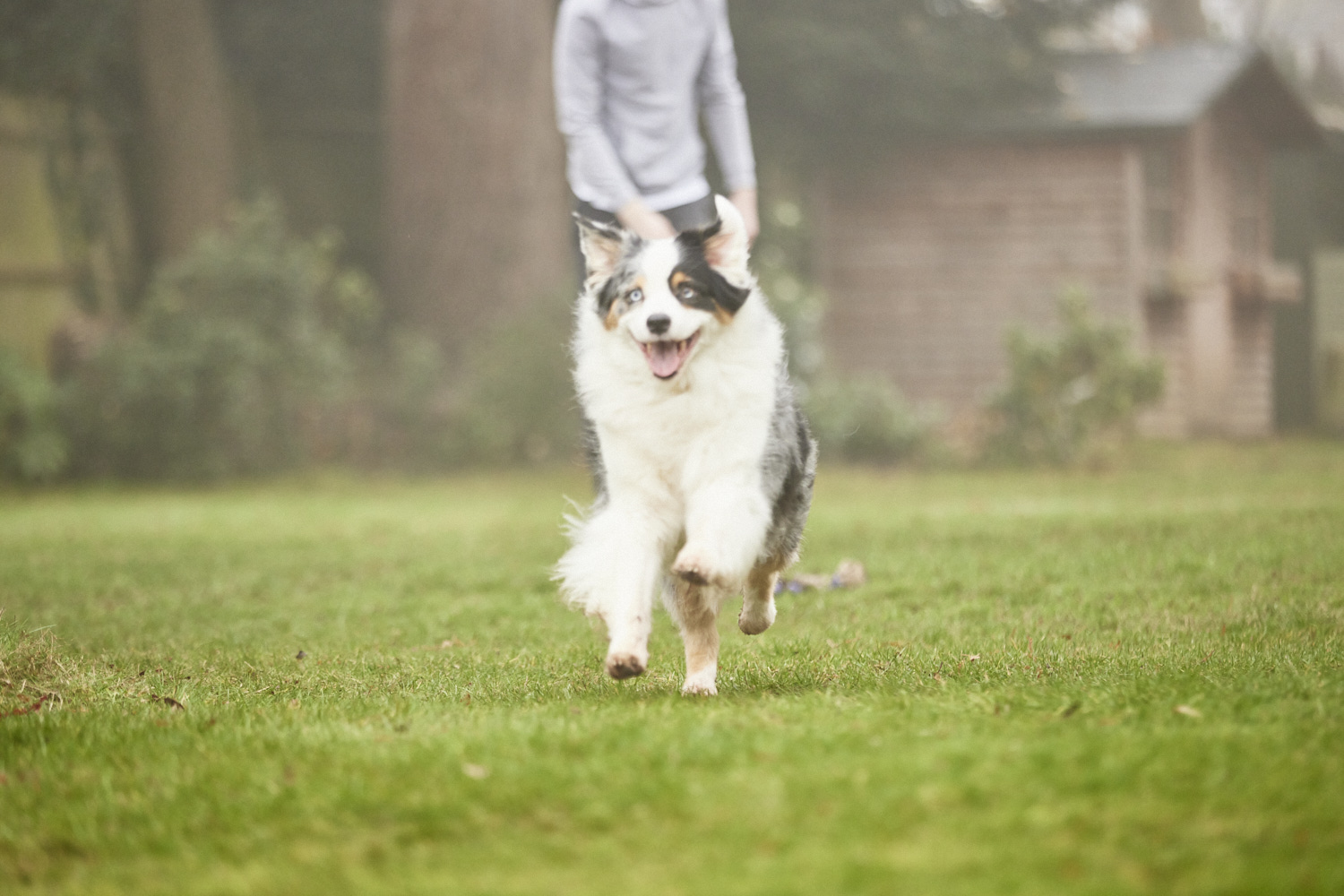Dogs slow down as they get older, just like we do. Watching your dog find walking or running harder is tough – so we include glucosamine and chondroitin as standard in our food to support their joints from an early age.
Making sure your dog has a healthy lifestyle and the right nutrition can help look after their joints, ease their pain, and keep them moving. We spoke to Head Vet Sean for more tips on how to keep your dog happy and healthy as they get older.
It’s not all about ageing dogs. You can start looking after joints and bones from an early age. Here’s what you can do for your dog, from puppy age to a sofa-loving senior.
A balanced diet – make sure you include plenty of joint-friendly ingredients. Food packed with nutrients like omega-3 and natural supplements – like glucosamine and chondroitin – will support their joints.
Healthy weight – to reduce strain on joints and the risk of problems later on. You should always keep your dog at a healthy weight, as being overweight puts strain on your dog’s joints, making them stiffer and more painful.
Moderate exercise – regular exercise is important, even for very arthritic dogs. It keeps joints from seizing and builds up supportive muscle. Swimming can be especially good for joints – just try to keep your dog from running and jumping into the water!
Avoid extreme exercise – high impact activity or prolonged running on hard surfaces can have an impact on joint health. For puppies, we recommend building up fitness and muscle strength with regular exercise before taking on anything more intense.
Treat injuries quickly – so there’s less risk of them turning into a long-term problem.
Super-soft bedding – we all love a deep bed to snuggle into, so the bouncier the better, as this will keep your dog’s joints from pressing against the floor.
Joint massage – for older dogs, physiotherapy can help strengthen muscle support and provide range of movement, without putting the joints under too much stress. Hydrotherapy is similar, but done in warm water – so it’s even gentler on joints.

What foods are good for dogs with arthritis?
Fish and fish oil – rich in omega-3, an essential fatty acid that’s proven to reduce inflammation in joints
Low calorie snacks – to keep your dog’s weight under control
Sweet potato, blueberries, tomatoes and peas – these contain antioxidants like vitamins A, C and E. Studies suggest they help support joint health AND improve recovery time after exercise
What can I give my dog for joint pain?
Depending on the severity of your dog’s condition, natural supplements can make a big difference. There are also safe and effective medicines that can really help if supplements aren’t enough.
What are the best natural supplements for dog arthritis?
Anything with omega-3 – especially green-lipped mussel which is clinically proven to reduce inflammation
Glucosamine – this natural supplement provides the building blocks for collagen, cartilage and joint fluid which are all essential for maintaining healthy joints
Chondroitin – a source of cartilage-boosting nutrients, chondroitin is also a blocker of destructive enzymes that break down cartilage in the joints
MSM (Methylsulfonylmethane) – is an organic form of sulphur that may have an anti-inflammatory effect.
Make sure you run any supplements past your vet first – lots of remedies helpful for humans don’t always have the same effect in dogs.
Can medication help?
If your dog’s joint pain is severe, your vet may suggest medication to soothe inflammation and ease soreness. Regular trips to the vet are a must for dogs as they get older or develop stiff joints – even if it’s not clear they’re in any pain. Your vet will let you know exactly how often your dog needs a check-up.
How can I prevent my dog from getting joint problems?
Joint pain is something almost all dogs experience – through genetics or as a symptom of old age – but there’s lots you can do to keep your dog’s joints healthier for longer. Supplements (like green-lipped mussel and Glucosamine) can offer preventative care for your dog’s joints.
Senior care
And, if you’ve got a senior or a dog that is finding it harder to run, jump and play like they used to, here’s what to do when you start noticing issues:
Reduce exercise – stick to whatever your dog can manage, just don’t cut it out altogether. Shorter, slower walks will keep your dog mobile
Introduce doggy ramps – these are actually really useful. Steps into the house and jumping into the car or onto the sofa can be tough on sore, stiff joints
Avoid obstacles – slipping or tripping is even more painful with sore joints. Make sure flooring is non-slip, and avoid raised doorways or other tricky obstacles.


Do you have any suggestions as to alternatives to fish oil for omega 3? My dog is really allergic to fish (and chicken and beef), and all of the nutraceuticals available have fish – or mussels as the omega 3 content.
Thanks
Mel